Indiana is a global leader in manufacturing by any measure and in line with the traditional manufacturing strength of the Great Lakes region of the United States.
Industry clusters are regional concentrations of related industries.[i] Clusters consist of companies, suppliers, and service providers, as well as government agencies and other institutions that provide education, information, research, and technical support to a regional economy.[ii] Clusters are a network of economic relationships that create a competitive advantage for the related firms in a particular region, and this advantage then becomes an enticement for similar industries and suppliers to those industries to develop or relocate to a region.[iii] Clusters exist in all types of economies and are more prevalent in locations that achieve better performance relative to their overall stage of development.[iv] It is useful to view economies through the lens of clusters rather than specific types of companies, industries, or sectors because clusters capture the important linkages and potential spillovers of technology, skills, and information that cut across firms and industries.[v] Viewing a group of companies and institutions as a cluster highlights opportunities for coordination and mutual improvement.
A Location quotient is an indicator of the economic concentration of a certain industry in a state, region, county, or city compared to a base economy, such as a state or nation that measures industry clusters in a region. A location quotient greater than 1 indicates the concentration of that industry in the area. A location quotient greater than 1 typically indicates an industry that is export-oriented. An industry with a location quotient of 1 with a high number of jobs present is likely a big exporter and is bringing economic value to the community feeding the retail trade and food services sectors.
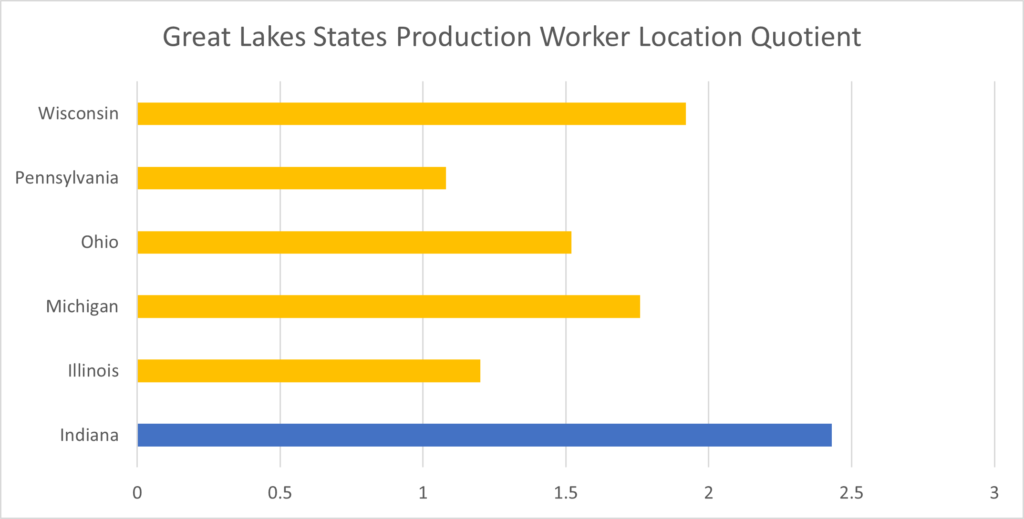
As the table above illustrates, the Great Lakes states all have a higher-than-average number of manufacturing production jobs with Indiana leading the list of having a higher concentration of manufacturing jobs than other Great Lakes states. In fact, Indiana has the highest concentration of manufacturing production workers in the United States with Wisconsin coming in second. The top 10 U.S. manufacturing states include many of the Great Lake’s states, but also other Midwest and Southern states as illustrated by the table below.
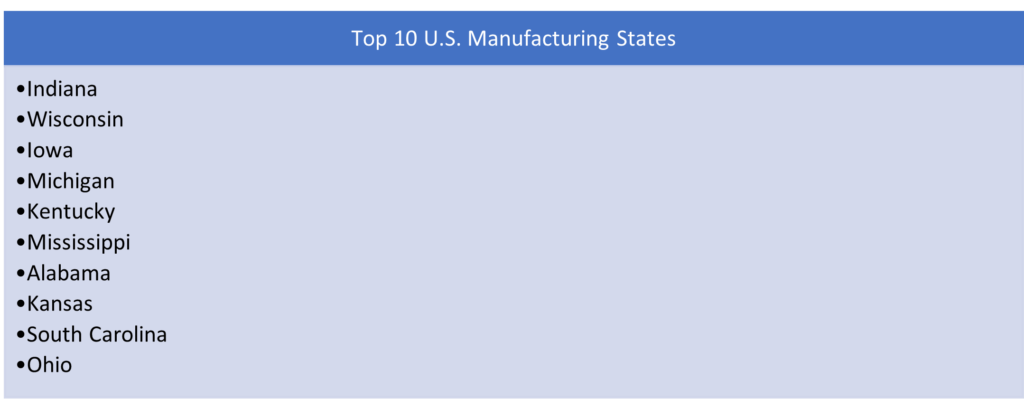
A review of Indiana’s top occupations illustrates again the important role manufacturing plays in the state. As the graphic below illustrates, Indiana’s manufacturing industry is nearly double the national average with transportation and warehousing the second largest industry in the state.
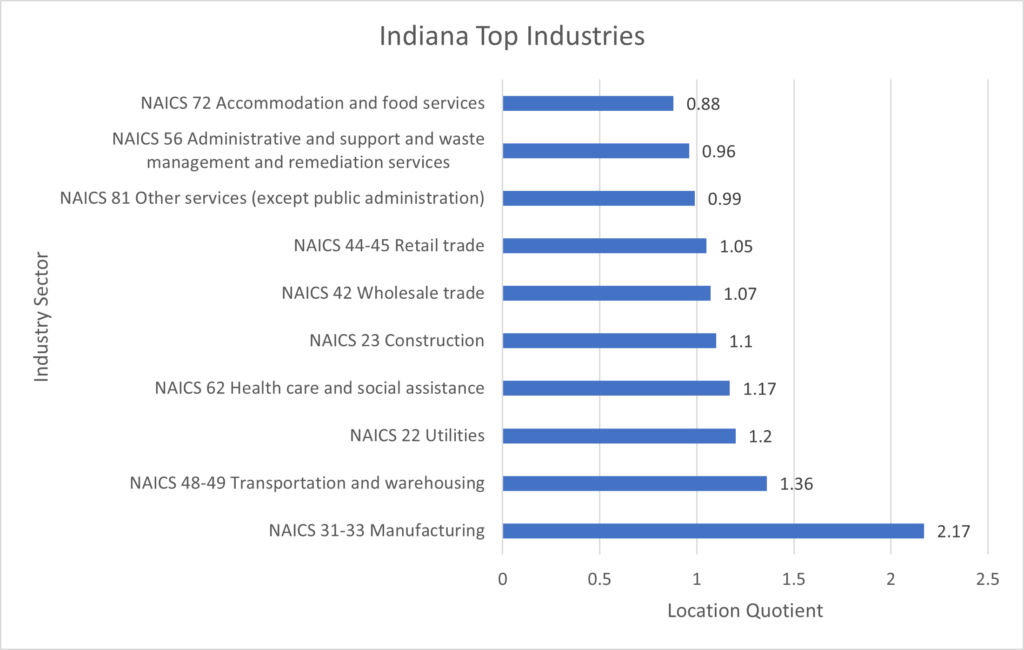
Within the manufacturing industry, the chart below illustrates the strong manufacturing subsectors in which Indiana is a leader. Indiana’s primary metal manufacturing industry that includes Iron and Steel Mills and Ferroalloy Manufacturing, Steel Product Manufacturing from Purchased Steel, Alumina and Aluminum Production and Processing, Nonferrous Metal (except Aluminum) Production and Processing, and Foundries.
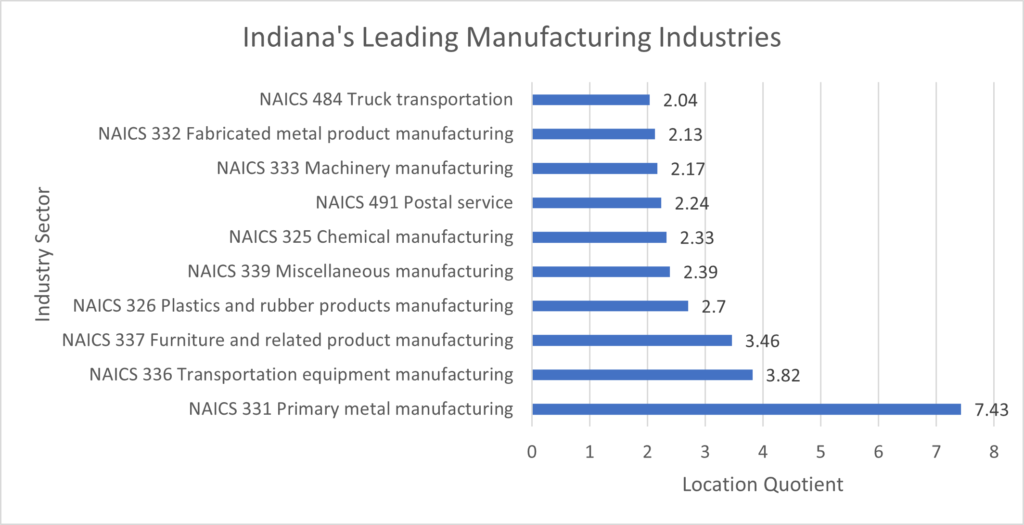
Indiana’s top occupations as outlined below illustrate again the power of manufacturing in the state as the majority of these occupations are tied to the production of goods.
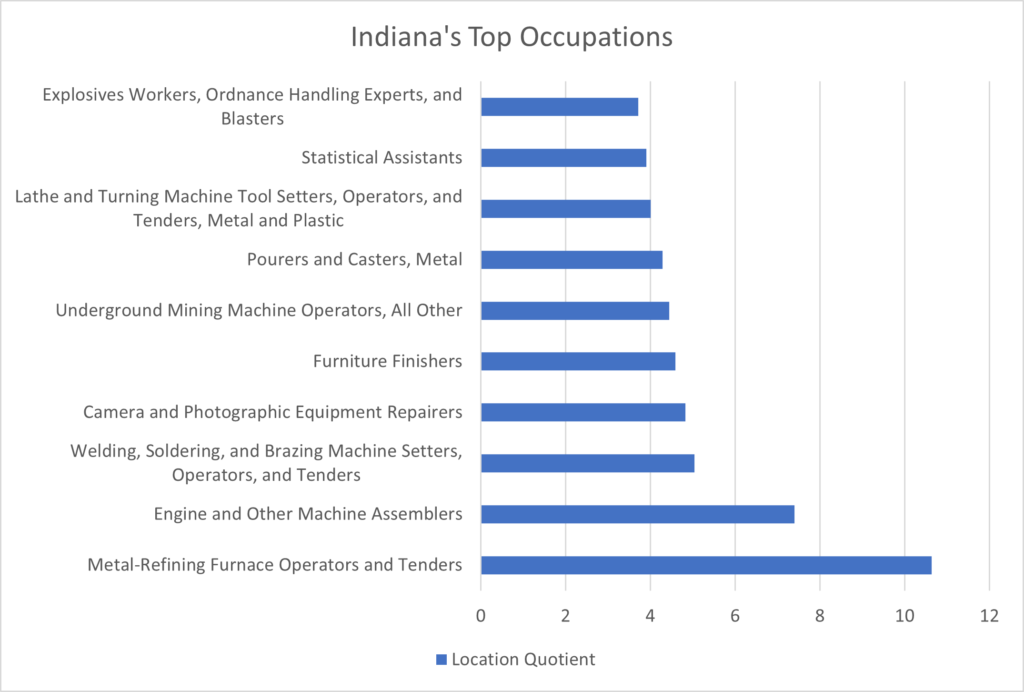
Understanding the industries that dominate Indianapolis is also important for many companies seeking a location in Central Indiana following the large, highly skilled population in the region. As the home of Eli Lilly’s corporate headquarters, Indianapolis is home to advanced services companies as well as advanced manufacturing in the chemical, metal, and transportation industries. As the table below illustrates, Indianapolis is a major logistics hub serving much of the Midwest, East Coast, and Mid-South regions as illustrated by a Warehousing and storage location quotient three times the national average. These logistics facilities are critical to growing manufacturing as all manufacturers of goods need to deliver them through a logistics network.
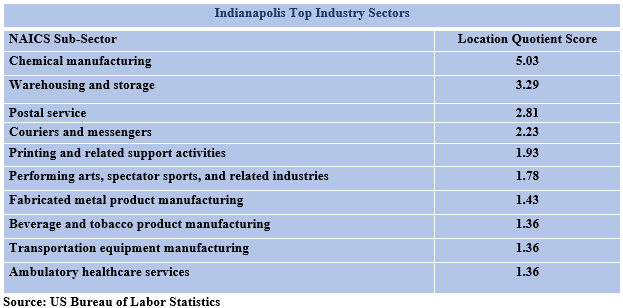
Indiana’s success in manufacturing is even more impressive considering the state’s relatively high production worker wage rate as compared to southern state competitors as illustrated by the chart below. It is interesting to note that Indiana’s annual mean wage rate for production workers is higher than regional and southern competitors and yet the state is the number one manufacturing state in the nation on a per capita basis.
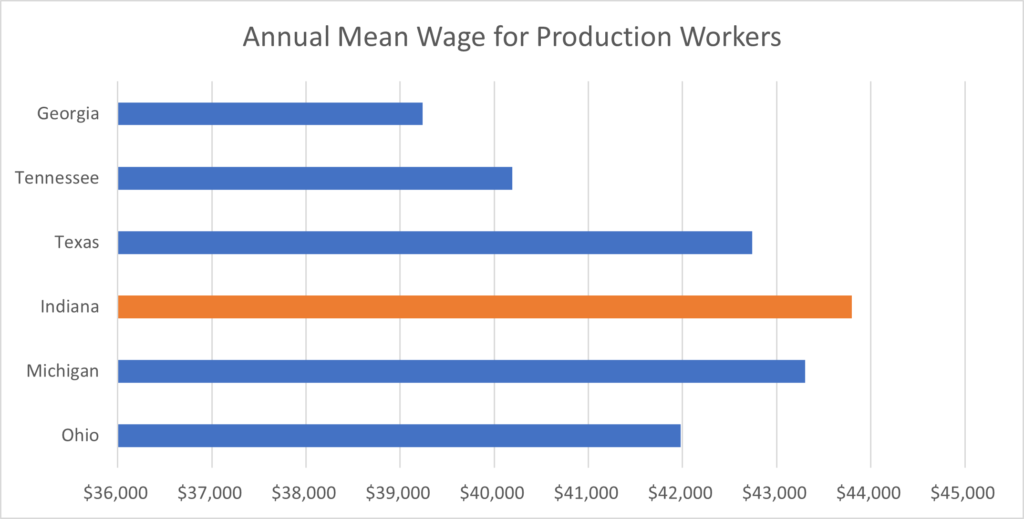
This wage difference for Indiana is carried through to a production worker wage analysis of major metro areas including Indianapolis as illustrated by the table below. This high wage rate illustrates the value companies will apply to highly skilled workers.
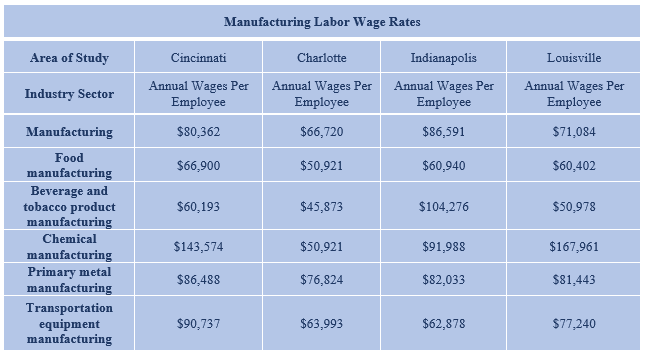
Indiana remains a global economic powerhouse anchored by manufacturing and growing hubs of pharmaceuticals, chemical manufacturing, and logistics companies in Indianapolis.